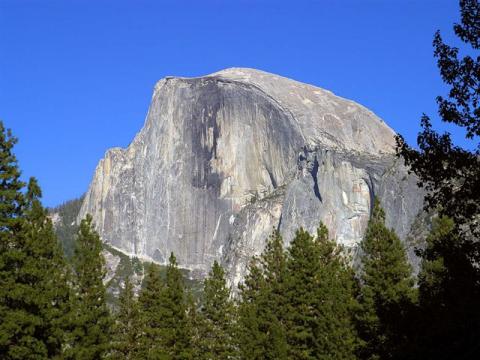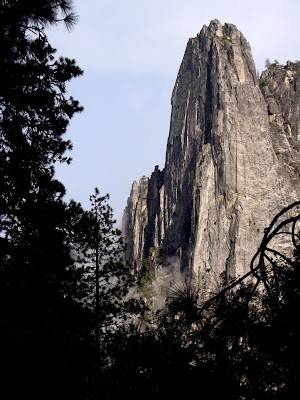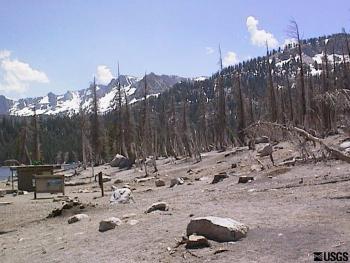bobgnote
Rookie
- Nov 24, 2008
- 1,258
- 38
- 0
- Banned
- #1
5 Natural Disasters Headed for the United States
40-Mile-Long Mudslide, Washington State
Movin' Mountain, Mt.Ranier
On an overcast afternoon high on Mount Rainier, a rocky slope slumps and then cuts loose from the mountain. Small rock slides are common on the volcano's steep flanks, but this one is different. Most of Mount Rainier's west face is in motion. Into the tumbling maelstrom go millions of tons of ice from the Puyallup and Tahoma glaciers. House-size rocks disintegrate in the downward crush. “With Rainier's active hydrothermal system saturating the rock, the landslide would reach the base of the slope as a flowing mass of watery, muddy debris,” says Kevin Scott, scientist emeritus at the U.S. Geological Survey's Cascade Volcano Observatory (CVO).
So a lahar is born--a volcanic mudflow--and a nightmare realized for the approximately 150,000 Washington residents who live and work on the solidified debris of past flows. The mass of roiling mud, rock and trees, traveling at 60 mph, would quickly funnel into the canyons of the Puyallup and Carbon rivers, where it would rise 180 ft. high before spreading into the lowlands as a 15-ft. wave.
The USGS gives a 1-in-7 chance of a similar event occurring in anyone's lifetime. And, says Dan Dzurisin, a CVO geologist: “There's no guarantee there would be any advance warning.”
80-Ft.-High Tsunami, Atlantic Coast
Coast Buster
Cumbre Vieja, the most active volcano in the Canary Islands, lurches as a violent earthquake wracks its upper slopes. A third of the mountain breaks away and plunges into the Atlantic Ocean, pushing up a dome of water nearly 3000 ft. high. They don't yet know it, but tens of millions of Americans from Key West, Fla., to South Lubec, Maine, have just 9 hours to escape with their lives.
The collapse of Cumbre Vieja unleashes a train of enormous waves traveling at jetliner speed. The first slam into nearby islands, then the African mainland. By the time they reach the East Coast of North America, the waves are up to 80 ft. high, and in low-lying areas, sweep several miles inland.
When tsunamis strike the United States, it is usually Hawaii or Alaska that take the hit. But topography and population density put the East Coast in a special risk category. “More Easterners are exposed to potential tsunamis--from the Canary Islands or the Cape Verde Islands--than the people on the West Coast, which has a steep coastline and few lowlands,” says Steven Ward, a geophysicist at the University of California, Santa Cruz. A Cumbre Vieja eruption in 1949 opened a mile-long, 20-ft.-deep fissure near the crest, forcing the volcano's western face to slump several feet. A 1971 eruption didn't budge it.
Marine geologists at Southampton Oceanography Center in Great Britain have a different take. They conclude the volcano would collapse in stages-- at worst threatening nearby islands. Ward calculates only a 5 percent chance Cumbre Vieja will trigger a tsunami in a given century, but that when it does a chunk of earth 15 miles long, 9 miles wide and nearly 1 mile thick will plunge into the sea--a landslide 250 times larger than the collapse of Mount St. Helens.

The tsunami's probable trajectory within 5 hours of the collapse of Cumbre Vieja.

The tsunami's potential range of destruction 9 hours after the collapse of Cumbre Vieja
-----------
This last event is happening, already, to cause aggravated sea level rise, between Cape Hatteras and Boston. Next?
40-Mile-Long Mudslide, Washington State
Movin' Mountain, Mt.Ranier
On an overcast afternoon high on Mount Rainier, a rocky slope slumps and then cuts loose from the mountain. Small rock slides are common on the volcano's steep flanks, but this one is different. Most of Mount Rainier's west face is in motion. Into the tumbling maelstrom go millions of tons of ice from the Puyallup and Tahoma glaciers. House-size rocks disintegrate in the downward crush. “With Rainier's active hydrothermal system saturating the rock, the landslide would reach the base of the slope as a flowing mass of watery, muddy debris,” says Kevin Scott, scientist emeritus at the U.S. Geological Survey's Cascade Volcano Observatory (CVO).
So a lahar is born--a volcanic mudflow--and a nightmare realized for the approximately 150,000 Washington residents who live and work on the solidified debris of past flows. The mass of roiling mud, rock and trees, traveling at 60 mph, would quickly funnel into the canyons of the Puyallup and Carbon rivers, where it would rise 180 ft. high before spreading into the lowlands as a 15-ft. wave.
The USGS gives a 1-in-7 chance of a similar event occurring in anyone's lifetime. And, says Dan Dzurisin, a CVO geologist: “There's no guarantee there would be any advance warning.”
80-Ft.-High Tsunami, Atlantic Coast
Coast Buster
Cumbre Vieja, the most active volcano in the Canary Islands, lurches as a violent earthquake wracks its upper slopes. A third of the mountain breaks away and plunges into the Atlantic Ocean, pushing up a dome of water nearly 3000 ft. high. They don't yet know it, but tens of millions of Americans from Key West, Fla., to South Lubec, Maine, have just 9 hours to escape with their lives.
The collapse of Cumbre Vieja unleashes a train of enormous waves traveling at jetliner speed. The first slam into nearby islands, then the African mainland. By the time they reach the East Coast of North America, the waves are up to 80 ft. high, and in low-lying areas, sweep several miles inland.
When tsunamis strike the United States, it is usually Hawaii or Alaska that take the hit. But topography and population density put the East Coast in a special risk category. “More Easterners are exposed to potential tsunamis--from the Canary Islands or the Cape Verde Islands--than the people on the West Coast, which has a steep coastline and few lowlands,” says Steven Ward, a geophysicist at the University of California, Santa Cruz. A Cumbre Vieja eruption in 1949 opened a mile-long, 20-ft.-deep fissure near the crest, forcing the volcano's western face to slump several feet. A 1971 eruption didn't budge it.
Marine geologists at Southampton Oceanography Center in Great Britain have a different take. They conclude the volcano would collapse in stages-- at worst threatening nearby islands. Ward calculates only a 5 percent chance Cumbre Vieja will trigger a tsunami in a given century, but that when it does a chunk of earth 15 miles long, 9 miles wide and nearly 1 mile thick will plunge into the sea--a landslide 250 times larger than the collapse of Mount St. Helens.

The tsunami's probable trajectory within 5 hours of the collapse of Cumbre Vieja.

The tsunami's potential range of destruction 9 hours after the collapse of Cumbre Vieja
-----------
This last event is happening, already, to cause aggravated sea level rise, between Cape Hatteras and Boston. Next?
Last edited by a moderator:




